Tank Strapping: A Comprehensive Guide
Tank strapping is a crucial process used to measure the contents of storage tanks, especially in industries dealing with liquids like oil, chemicals, and fuels. These measurements are essential for accurate tank calibration, which helps companies track inventory and manage their assets efficiently.
By implementing tank strapping and calibration techniques, businesses can ensure precise tracking and regulation of their liquid inventory. This practice is widely adopted across sectors such as energy, agriculture, transportation, and more.
Whether it's for storage, transport, or handling large volumes of liquids, tank calibration is a standard procedure that ensures accuracy and reliability in operations.
What Is Tank Strapping?
Tank strapping involves measuring the dimensions of a tank—such as its height, diameter, and circumference—to determine the volume of liquid it contains. This data is then converted into calibrated volume measurements using a tank chart or calibration table.
These measurements are typically taken in units like feet, inches, meters, or centimeters, while the resulting volumes are recorded in barrels, gallons, liters, or cubic meters.
The combination of linear measurements and calibrated volumes is displayed on tank charts, which are often located on the outside of the tank. These charts allow for quick and accurate reporting of the internal contents of the tank.
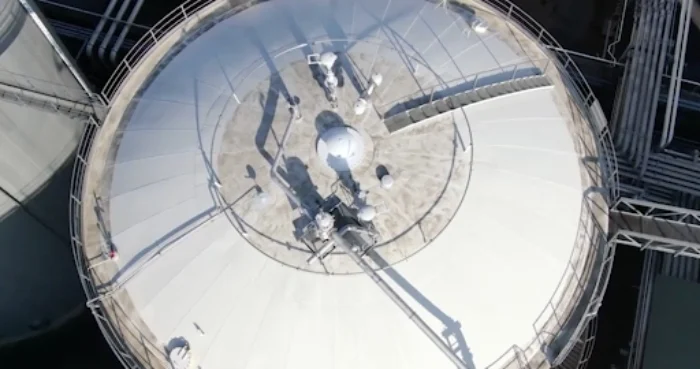 Diesel tank inspection
Diesel tank inspection
Why Is It Called Tank Strapping?
The term "tank strapping" originates from traditional methods where steel tapes or straps were used to manually measure the tank’s dimensions. Although modern technology has advanced, the name has remained, reflecting the industry's roots.
The Importance of Tank Strapping
Tank strapping and calibration are vital for maintaining accurate inventory management. Without these processes, manual or less precise gauging systems can lead to errors, affecting business decisions and financial outcomes.
By providing reliable and precise measurements, tank strapping helps companies save money, reduce waste, and improve operational efficiency. It also enhances transparency, ensuring trust between businesses, clients, and regulatory bodies.
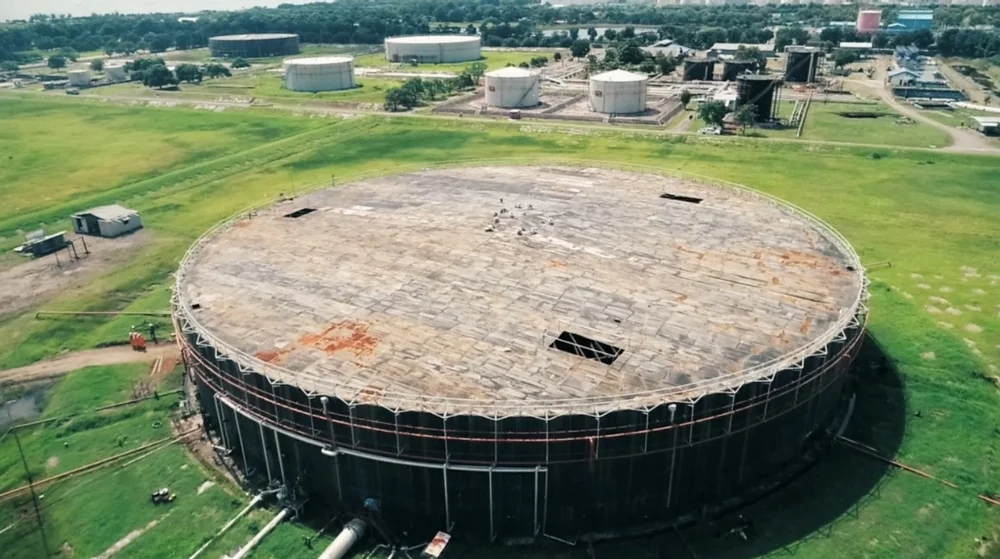
How Does Tank Strapping Save Money?
- Helps identify inventory losses quickly
- Reduces errors in refilling or loading containers
- Ensures customers receive the correct amount
- Provides precise stock levels down to the cubic foot
- Enables better planning and monetization of inventory
Accurate measurements also contribute to safer working environments, especially when dealing with hazardous or volatile substances.
What Kinds of Tanks Need Calibration?
Any tank containing liquids, chemicals, fuel, or gas should be calibrated. Common types include vertical, horizontal, spherical, fixed roof, and floating roof tanks.
Vertical Tanks
Vertical tanks are commonly used for storing water, chemicals, and other liquids. They are designed for both indoor and outdoor use.
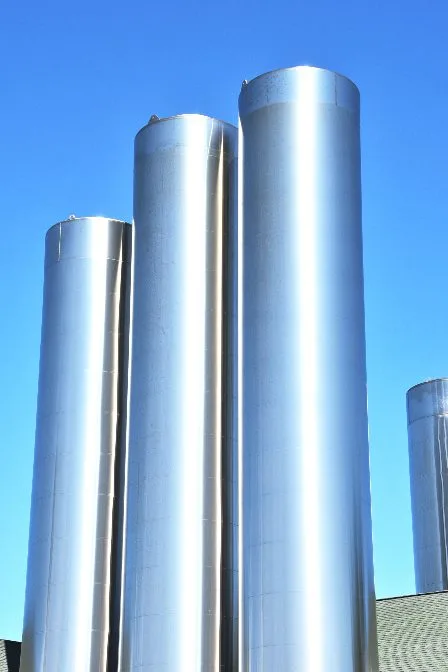 Vertical tanks containing milk
Vertical tanks containing milk
Horizontal Tanks
Horizontal tanks are often used for smaller quantities and are easier to transport. They can hold various materials like pesticides and fertilizers.
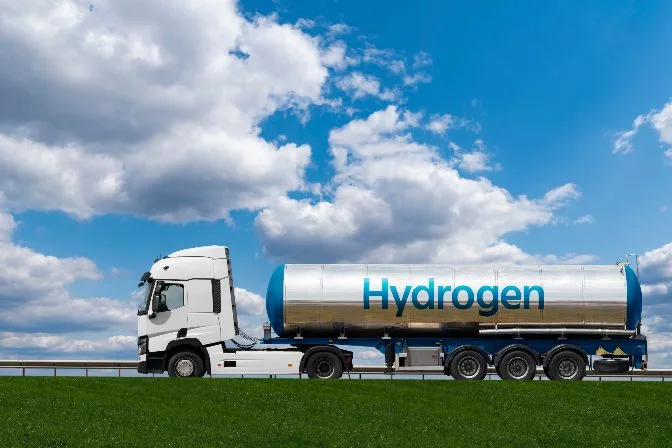 Horizontal tank containing Hydrogen
Horizontal tank containing Hydrogen
Sphere Tanks
Spherical tanks are ideal for high-pressure liquids or gases. They are commonly used for storing butane and similar substances.
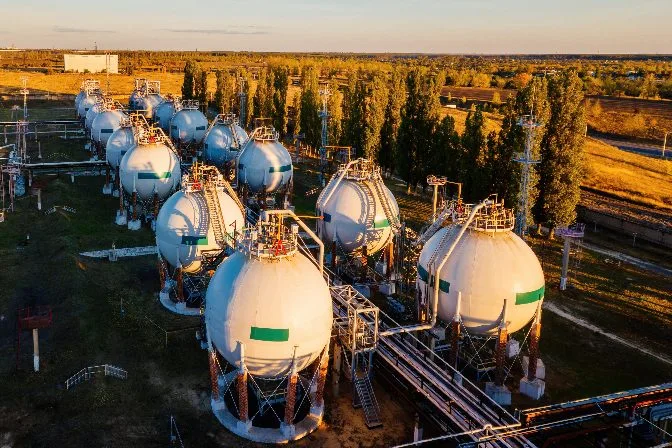 Spherical tanks containing gas
Spherical tanks containing gas
Fixed Roof Tanks
Fixed roof tanks have a permanent roof, often shaped as a cone or dome. Some are vapor-tight, while others have pressure relief systems.
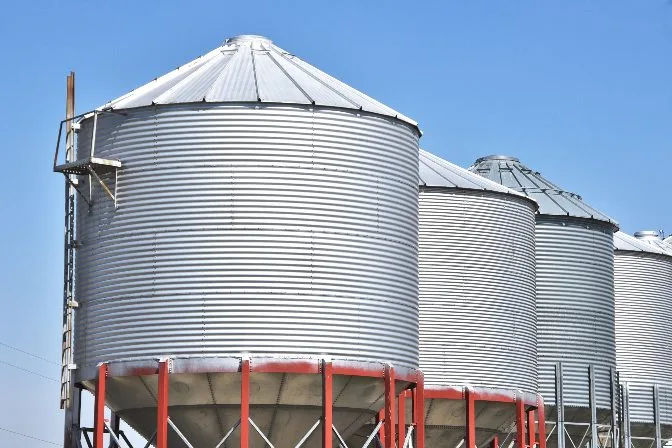 Fixed or closed roof storage tanks containing grains
Fixed or closed roof storage tanks containing grains
Floating Roof Tanks
Floating roof tanks have a roof that floats on the surface of the liquid, reducing evaporation and vapor space. They are commonly used for crude oil and other hydrocarbons.
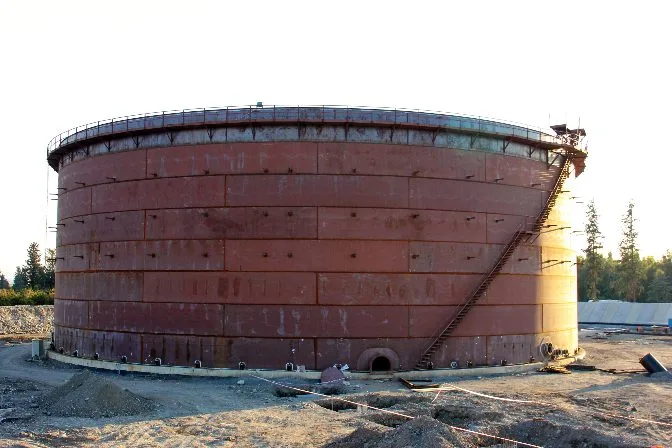 Floating roof tank containing crude oil
Floating roof tank containing crude oil
What Is a Tank Strapping Table?
Tank strapping tables convert linear measurements into calibrated volume data. They are also known as gauge charts, dip charts, or calibration tables.
These tables help workers quickly determine the volume of liquid in a tank by matching the measured height with the corresponding volume. The relationship between height and volume varies depending on the tank's shape and size.
Most tables include both metric and imperial units, and they are tailored to each specific tank. Irregularly shaped tanks may require additional considerations during calibration.
How to Read a Tank Strapping Table
A typical tank strapping table includes measurements in inches, millimeters, barrels, liters, and gallons. For example:
| INCHES | MM | BBL | LITERS | US GAL |
| 2 | 51 | 1 | 159 | 42 |
| 4 | 102 | 2 | 318 | 84 |
| 6 | 153 | 3 | 477 | 126 |
| 8 | 203 | 4 | 636 | 168 |
Using this table, if the measurement is 4 inches, the tank contains 2 barrels, 318 liters, or 84 gallons of liquid. Each tank requires its own calibration chart based on its unique dimensions and structure.
Manual Tank Strapping Methods
Despite technological advancements, many companies still rely on manual methods for tank strapping. These include the innage and ullage methods, which involve physical tools like steel tapes and plum bobs.
Innage Method
This method measures the depth of the liquid using a weighted tape. The tape is lowered into the tank until it touches the bottom, and the reading is taken from the reference point above the tank.
Ullage Method
The ullage method measures the empty space above the liquid. It is particularly useful for hazardous materials where contact with the substance could damage the measuring tool.
Other Manual Methods
Additional measurements like temperature, tank circumference, and foreign objects inside the tank may also be necessary for accurate calibration.
Manual Tank Strapping Equipment
Common equipment includes plum bobs, spring balances, steel tapes, and leveling tools. These devices help ensure accurate and consistent measurements during manual strapping.
Technological Tank Strapping Methods
Modern technologies like continuous float-level transmitters, electro-optical distance ranging, and ultrasonic sensors provide faster, more accurate, and safer ways to measure tank contents.
Continuous Float-Level Transmitters
These devices continuously monitor the liquid level in real-time, making them ideal for foamy or vaporous liquids.
Electro-Optical Distance Ranging
This method uses 3D mapping to measure the tank's circumference without scaffolding, increasing efficiency and accuracy.
Submersible Pressure Transducers
These sensors measure pressure to calculate liquid height, making them suitable for hazardous or corrosive substances.
Ultrasonic Sensors & Radar Transmitters
These sensors emit signals that reflect off the tank walls, allowing for non-contact, accurate level measurements.
Drones in Tank Inspection
Drones are increasingly used in tank inspections due to their ability to navigate hazardous areas and collect detailed visual data. They can create 3D models that improve the accuracy and efficiency of tank strapping.
For example, PERTAMINA used an indoor drone to inspect an old crude oil tank, achieving safer and more efficient results compared to manual methods.
Drones not only enhance safety but also reduce costs and improve the overall inspection process. As technology advances, the use of drones in tank strapping will likely become even more widespread.
[Read next: A Guide to How Drones are Used for Inspections]
Adult Costumes,Adult Halloween Costumes,Fun Costumes,Adult Halloween Outfit
Leadtex Animation Creative Co., Ltd. , https://www.leadtex.com